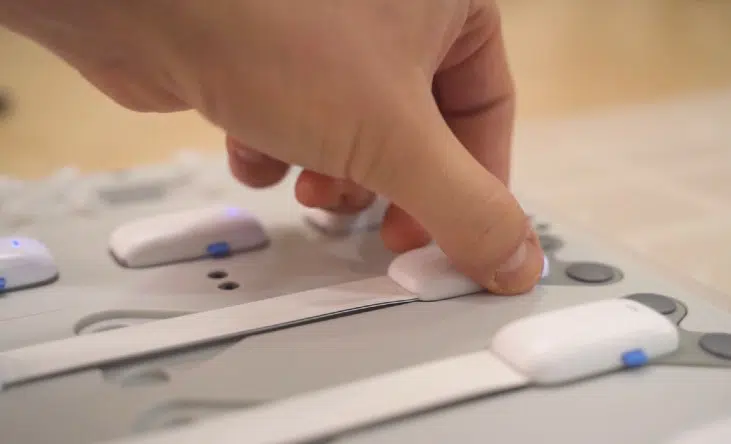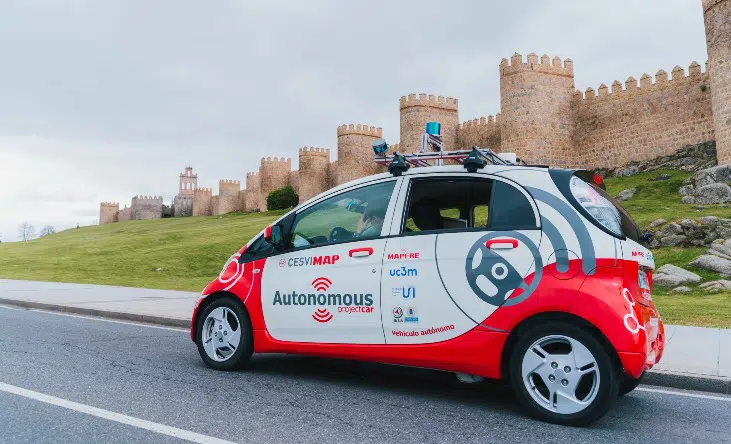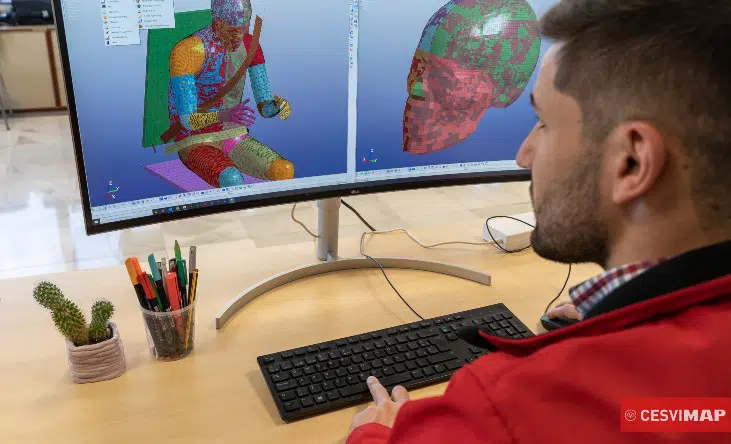INNOVATION| 28.07.2021
University research and business, the perfect alliance to accelerate the insurtech ecosystem

Neus Martínez
There is every indication that, within a few decades, we’ll be sharing our cities with self-driving vehicles. With this in mind, what would be the consequences of our cars being the target of a massive cyberattack? The answers to this and many other questions across a range of fields, such as health and mobility, are already being sought through joint work between universities and large companies. MAPFRE is participating in this coming together of talent, resources and innovative vision at the forefront of research by partnering with the most cutting-edge academic institutions.
We are experiencing a clear social and technological paradigm shift at present, and it is imperative that we support research and seek to anticipate developments across the insurtech ecosystem. Universities are one of the arteries that connect these two worlds.
Alliances between academia and business break the static traditional model and shatter the limits of what is possible through joint efforts and visions for the future. In doing so, these partnerships multiply the value of those synergies. MAPFRE collaborates with several lines of research that match talent with resources. Not only do these projects help to address the challenges ahead right now, but they also drive researchers’ work beyond the realm of academia, bring their projects into a real working environment.
“After talking to universities around the world, we quite literally noticed that we already had the resources at our disposal, and that speaks volumes about the Spanish ecosystem” (Joan Cuscó)
We see a collaborative working model as the glue that holds together each university’s human capital across its specialist departments with the expertise of large corporations, where students have the chance to develop their research in a more palpable context.
Francisco de Vitoria University, spearheading research with four players
FIGUR8, a startup created by two doctors at the Massachusetts Institute of Technology (MIT) and which has received investment from MIT’s fund, has developed a technology solution that measures the severity and evolution of musculoskeletal injuries. The company entered MAPFRE’s insur_space acceleration program for two reasons: to reinforce their project and to bring its product—initially targeted at elite athletes—closer to the insurance world.
In the first phase, which involved 25 patients, the focus of the research was on road traffic injuries. The results showed that FIGUR8’s biomechanical artificial intelligence system was exceptionally accurate. The proposal was then made to afford scientific validity to the product by collaborating with two institutions.

Francisco de Vitoria University—operating as an independent organization that has no relationship with and received no funding from FIGUR8—is designing a clinical validation study in which between 500 and 1,000 patients will take part, including both healthy individuals and those with injuries. This is a sample size large enough for the group of medical experts involved to certify that FIGUR8’s solution measures what it says it will measure, and that it does so with the level of accuracy that it claims to provide. The university is leading this research project and once it is complete, it will publish an open paper that will give scientific backing to FIGUR8’s product.
For the next phase of the study, FREMAP will make its biomechanics classroom available; the space is specially designed for research involving the sample of parties injured following different types of workplace accidents.
This four-way collaboration proves that the Spanish entrepreneurial and research ecosystem can be just as powerful as any top-level international alliance.
University Carlos III and CESVIMAP, providing access to young research talent
CESVIMAP, MAPFRE’s R&D center, works hand-in-hand with universities through various alliances based around different projects. These agreements are reached by assessing the mutual interest in each research project. The involvement of several institutions allows direct access to the burgeoning areas of innovation within each university.
For R&D manager Rodrigo Encinar, “These collaborations allow MAPFRE to have access to talent that can be incorporated into innovation teams when it comes to entering the workplace environment. The relationship we establish with universities goes beyond that: We are partners, creating that ecosystem together.”
Within this framework, an agreement with UC3M (University Carlos III of Madrid) enables further progress to be made in the technological research into self-driving cars that CESVIMAP has been conducting in various phases since 2018. The study evaluates the risks and factors that impact the insurance industry, allowing products to be adapted to new contexts. The project is very attractive to young university students, who see it as a valuable opportunity to be at the heart of innovation that will impact organizations and society, as well as being a realistic professional option where their research work will be valued at all levels.

Martín Palos Lorite, studying a Master’s in Robotics and Automation, described his experience: “The collaboration between CESVIMAP and UC3M allows us to go further in our research, by enabling us to integrate and validate our designs and algorithms in a real platform whenever we need to.”
Moreover, part of the future of the insurtech ecosystem lies in the classroom. Having access to a university means being able to fine-tune areas for research through projects designed to adapt the industry to the latest needs. As a global insurance company, MAPFRE seeks such collaboration around the world. This process has shown that, although areas such as the United States and Asia are perceived as the epicenters of innovation, the pleasant surprise may be that junior talent is closer to home than many might have thought.
Joan Cuscó, Global Head of Transformation, highlights the sensations experienced during the process as “a rich well of optimism and reality, because, after talking to universities around the world, we quite literally noticed that we already had the resources at our disposal, and that speaks volumes about the Spanish ecosystem.”
The University of Comillas (ICAI): our ally in improving road safety
Since 2000, Toyota has been developing THUMS (Total Human Model for Safety) its virtual dummies, generated through finite element software. In 2021 it released its models into the public domain so that any person or company that wanted to investigate road traffic accidents and occupant safety could use it, with the aim of promoting safer mobility for all. So what do they represent, particularly financially speaking, – for automobile brands, compared to traditional tests? The possibility of avoiding destructive tests with real models brings a cash saving for manufacturers from the get go, but also the possibility of diversifying the type of tests that are carried out.

To create THUMS, Toyota started with an analysis of the human body, using different models (children, men and women), modeling them with scanning techniques and then using finite element techniques to reproduce the characteristics and behavior of each part of the human body (bones, internal organs, skin etc.). CESVIMAP, MAPFRE’s R&D center, in collaboration with the University of Comillas (ICAI), has begun to develop different projects around the possibilities of using THUMS to study the behavior of the human body in different types of collision-related injuries analysis, as well as using it for reconstructions of road traffic accidents and road safety scenarios. This collaboration between the university and MAPFRE aims to enhance road safety and contribute to a better society.
